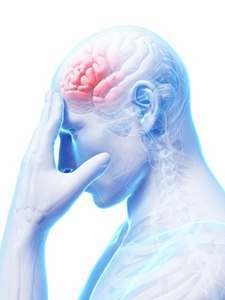Get the Facts About Migraines

A migraine headache is usually an intense, throbbing pain on one side of your head, however, it can affect both sides of the head. Most individuals who suffer from migraine headache feel the pain in the temples or behind one eye or ear, although in reality, any part of the head can be affected. It is believed that in the U.S., more than 37 million people suffer from migraines at some stage in their lives, with 2-3 million migraine sufferers considered as 'chronic'.
Migraine can occur any time of the day, although it often starts in the morning. The pain can last anywhere from a few hours up to 72 hours. Some people get migraines once or twice a week, others are known to suffer daily. Others, only once or twice a year. Most of the time, migraines are not considered to be a threat to your overall health. However, migraine attacks can and often do, interfere considerably with your day-to-day quality of life.

What is a Migraine?
Migraine is considered a chronic health condition, not just simply a bad headache. It is an extremely debilitating collection of neurological symptoms and ranks in the top 20 of the world's most disabling medical illnesses.
Nearly 1 in 4 U.S. households includes someone who is considered to be a migraine sufferer, and all ages and gender can be affected.
Over 27 million women are affected by migraines in the United States today. Estrogen adversely influences the brain receptors that may play a role in the development of a migraine. About 50% of women affected have more than one attack each month, and a quarter experience 4 or more severe attacks per month. More severe and more frequent attacks often result from fluctuations in estrogen levels. Menstrual migraine is an attack that occurs up to 2 days before and up to 3 days after menstrual onset. They are generally more severe and harder to control than other type of migraine.
Unfortunately, migraines are also very common in children. It has been reported in children as young as 18 months old. About 10% of school-age children suffer from migraines. Half of all migraine sufferers have their first attack before the age of 12. Before puberty, boys suffer from migraines more often than girls. As adolescence approaches, the incidence increases more rapidly in girls than in boys.
Migraine Symptoms
Symptoms vary between individuals and each may display different symptoms during a migraine attacks, which also may differ in length and frequency. Migraines usually last anywhere from 4 to 72 hours and most people are free from symptoms between migraine attacks. Besides pain, migraine can also cause nausea, vomiting and sensitivity to light and sound.
There are several different types of migraine, the most common types of migraine fall within two categories - migraine with aura and migraine without aura. Aura, is a term used to describe a set of neurological symptom associated with migraine, most commonly they include visual disturbances such as blind or colored spots, sparkles or stars, flashing lights before the eyes, tunnel vision, zig zag lines and temporary blindness.
Migraines are a complex health condition with a wide ranging symptoms for individuals. There is currently no known cure for migraines.
What are the Causes and Characteristics of Migraines?

There is no known 'specific' cause for migraines, although most people who suffer are genetically predisposed to migraines. If you are susceptible to migraines there are certain triggers which commonly are associated with attacks. These include, but are not limited to, stress, lack of food, alcohol, hormonal changes in women, lack of sleep and the environment.
There are specific stages and symptoms of migraine that distinguish it from a regular headache. These include:
- 1. Premonitory Stage
- 2. Aura Stage
- 3. Main Attack Stage
- 4. Resolution and Recovery Stage or Postdrome Stage

How are Migraines Diagnosed?
There are no specific tests to diagnose migraines. For an accurate diagnosis to be made, your doctor must identify and acknowledge a pattern of recurring headaches along with the associated symptoms to officially diagnose.
To help with the diagnosis, it can be very useful to keep a diary of your migraine attacks for a several weeks with details of when the migraine began, how long the attack lasted, what symptoms you experienced and what medication you took (if any). Also, it is helpful to make a note of the food you ate that day and, for women, when you started your period, as this can help your doctor identify potential triggers.
Your doctor may decide to refer you to a neurologist for further assessment and treatment if a diagnosis is unclear, you experience migraines on 15 days or more per month (chronic migraine), or treatment is not helping to control your symptoms.
Migraine is not a quick fix condition. It is not a health condition that can, or should, be dealt with in a few minutes and then forgotten. Attempts to do so will often result in difficulties in diagnosing and treating the condition, and a less than satisfying experience for both doctor and patient. Migraine is not a static condition so there will be periods of time when patients need relatively little care and attention and then periods when they will need closer monitoring and advice. The time spent collecting a clear history of your migraines, will be incredibly beneficial in diagnosing and therapeutic success.







 MigraClear™'s formulation of effective ingredients and strong name recognition have brought praise from both customers and health professionals alike. To learn more about the research and data behind MigraClear™ , please visit our "
MigraClear™'s formulation of effective ingredients and strong name recognition have brought praise from both customers and health professionals alike. To learn more about the research and data behind MigraClear™ , please visit our "




